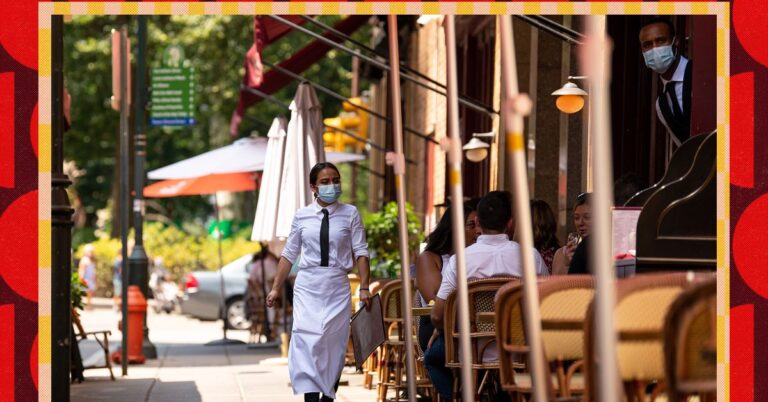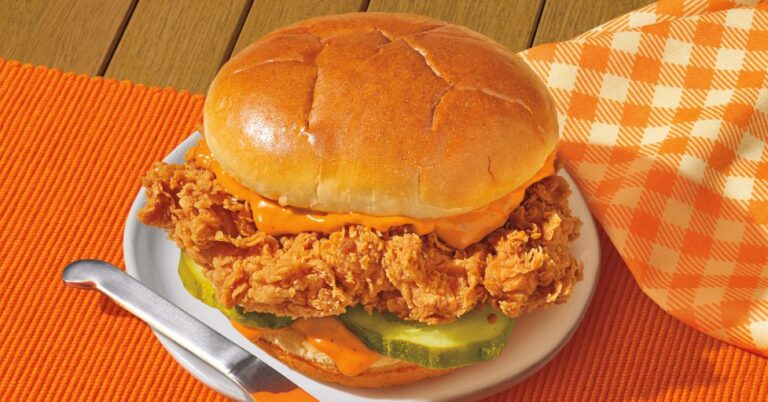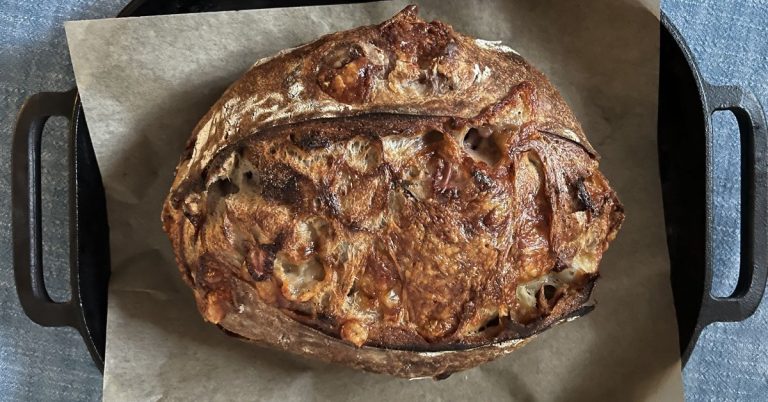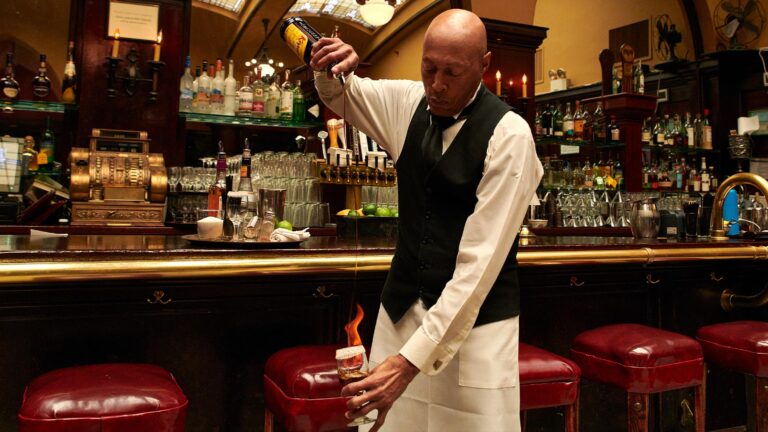Inside the Magical Early Morning Hours at Reading Terminal Market
The sun has barely been up for an hour but you wouldn’t know it inside Reading Terminal Market, the Philly dining hall destination that has been a breakfast and lunch mainstay at the corner of 12th and Filbert since 1893. It’s a half an hour before the market even opens to visitors — which it does every day at 8 a.m. — and bodies are moving around in careful choreography behind merchant counters, chopping vegetables, wiping down surfaces, rolling out dough, baking cookies, and getting ready for the day.
:no_upscale()/cdn.vox-cdn.com/uploads/chorus_asset/file/22866928/EATER_ReadingTerminal_Aug.2021_HR_01.jpg)
“You’re half still waking up and the coffee is starting to kick in,” Roger Miller, owner of pretzel company Miller’s Twist, says about the hours before the market opens. Miller leaves his house in Lancaster at around 5 a.m. every day, getting to his stall — the one known for its buttery Amish-style pretzels and pretzel dogs — by 6:30. “People are hollering and you can hear them lifting and crashing pans,” he says of the morning scene. He’s been observing the same routines at the market for over 20 years now, and he says that the morning before the doors open is still a special time. “It’s a little bit dark, and I like that you can get anywhere you want quickly,” he says. “It’s very different from the lunch crowd, that’s for sure.”
:no_upscale()/cdn.vox-cdn.com/uploads/chorus_asset/file/22867283/EATER_ReadingTerminal_Aug.2021_HR_19.jpg)
Reading Terminal Market has evolved repeatedly and out of necessity since it officially opened in its current location in February of 1893. Some version of the Center City market has been in existence in Philadelphia since the arrival of William Penn on Lenape land, with the opening of an informal bustling market at Front and High Streets in 1680. This early iteration reflected a lot of what still exists today at Reading Terminal: It was the commercial center of the city with produce, meat, and other sundries for sale, but also a place where locals went to socialize and politicians met to debate municipal issues. Today’s market by that metric is actually quite the same: Down the street from City Hall, and across the street from the Pennsylvania Convention Center, Reading Terminal — with its 72 stalls, many serving lunch and coffee, others selling groceries — is a central meeting point for city employees and tourists alike. As one podcast put it, for Philadelphians, Reading Terminal is the place you go to get lunch when you have jury duty.
:no_upscale()/cdn.vox-cdn.com/uploads/chorus_asset/file/22867239/EATER_ReadingTerminal_Aug.2021_HR_43_2.jpg)
:no_upscale()/cdn.vox-cdn.com/uploads/chorus_asset/file/22867256/EATER_ReadingTerminal_Aug.2021_HR_36.jpg)
But in the morning, before even the dedicated locals arrive for their coffee, the Market is a very different place. The counter at DiNic’s, usually packed with diners devouring hot roast pork sandwiches stuffed with broccoli rabe, is instead crowded with rows upon rows of brown bags full to the brim with Sarcone’s seeded and unseeded rolls. Behind the counter, an automated cheese slicer slices sharp provolone in thin ribbons that pile up like a Viennetta cake, and a cook who has been working in the market for 23 years preps a mountain of vibrant long hot peppers for service, before tackling the onions. Inside the small stalls, everything — in the quiet of the morning — is a delicate dance.
The automated provolone slicer at DiNic’s.
The prep that goes into opening the market for a day of eager tourists, especially on weekends, begins for many merchants at 6 a.m., sometimes even earlier. At Umi Seafood and Sushi, Fnu Elvera spends two hours before the doors open chopping vegetables and prepping the fish. “It’s very quiet and exciting,” at that hour, she says. But she prefers when visitors arrive because that’s when she gets to interact with tourists and locals. Working at the market, “you learn how to handle different kinds of people,” Elvera says.
The hour before service begins can be anxiety inducing, too. Pearl’s Oyster Bar is right near a corner entrance to the market, and sometimes Lor Kats, the oyster bar’s head chef, can see people waiting outside before guards even unlock the doors. “I’m one of those people, when I’m getting ready for service, I freak out,” he says. “I’m always anxious ahead of service, even if it’s the slowest day ever. As soon as people start coming in, I start kvetching.” But then he sees the large crowds disperse among the many stalls, and he’s able to calm down.
:no_upscale()/cdn.vox-cdn.com/uploads/chorus_asset/file/22867048/EATER_ReadingTerminal_Aug.2021_HR_33.jpg)
:no_upscale()/cdn.vox-cdn.com/uploads/chorus_asset/file/22867362/EATER_ReadingTerminal_Aug.2021_web_65.jpg)
One of the nice things about the morning is the camaraderie among the merchants, Kats says. “It’s nice. Everybody knows everybody,” so he likes to walk through and say hi to everyone when he has time. “I hold court in the market on Wednesday,” Kats adds. “I walk around and be nosy.”
The period before service begins are “magic hours,” Elizabeth Halen, owner of Flying Monkey Bakery, says. “Some of the locals are really tuned into that, so even after the market opens at 8 o’clock, it’s still a very serene, quiet, easy-to-shop kind of place.” The prep for Flying Monkey includes everything from baking cookies to cutting bars to bringing wet and dry ingredients out, allowing them to get to room temperature.
But the most essential task at the bakery begins as early as 6 a.m., before anything at the market is in motion. “Sometimes I start brewing coffee before the lights turn on,” Halen says. “Getting the coffee ready is number one.”
:no_upscale()/cdn.vox-cdn.com/uploads/chorus_asset/file/22867250/EATER_ReadingTerminal_Aug.2021_HR_05.jpg)






